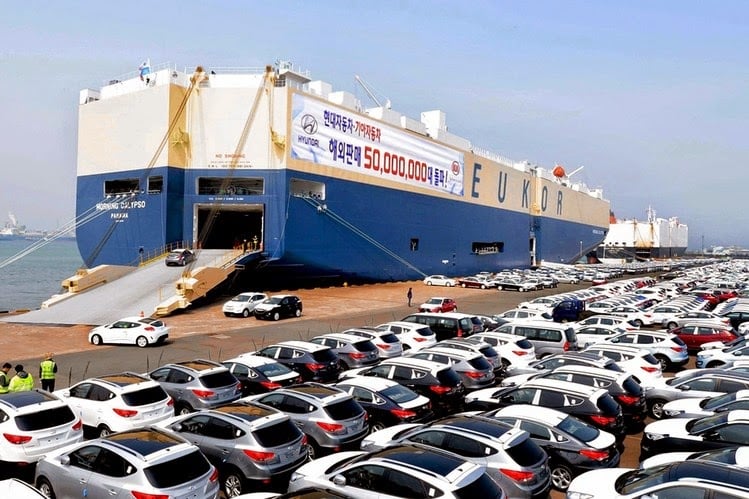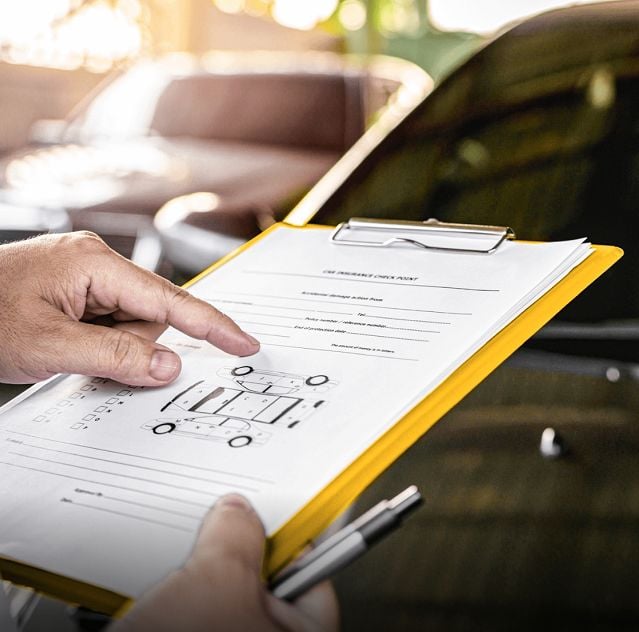

Japan Car Exports: A Comprehensive Guide to Shipping Cars from Japan via RoRo and Container
In recent years, the Japanese car export industry has experienced a significant boom, attracting attention from around the globe. With a reputation for producing high-quality vehicles, Japan has become a leading exporter in the automotive market. In this article, we will delve into the various aspects of Japanese car export, exploring the different methods used to ship cars from Japan, such as Roll-on/Roll-off (RoRo) and container shipping.
Additionally, we will provide a step-by-step guide to navigating the car shipping process from Japan and highlight key considerations for efficient and cost-effective export. Whether you are a car enthusiast, a dealer, or an individual looking to import a Japanese vehicle, this article will provide valuable insights and information to help you make informed decisions. So, let’s dive into the world of Japanese car export and uncover the secrets of shipping cars, whether it be via RoRo or container, from Japan to destinations worldwide.
- 1. The Booming Industry of Japanese Car Export: A Global Perspective
- 2. Exploring Different Methods: Shipping Cars from Japan via RoRo and Container
- 3. Navigating the Process: Step-by-Step Guide to Car Shipping from Japan
- 4. Key Considerations for Efficient and Cost-Effective Japanese Car Export
1. The Booming Industry of Japanese Car Export: A Global Perspective
The Japanese car export industry has experienced significant growth over the years, establishing itself as a major player in the global market. With a rich history of producing reliable and high-quality vehicles, Japan has become renowned for its automotive manufacturing prowess. As a result, the demand for Japanese cars has surged worldwide, leading to the emergence of a booming industry focused on exporting these vehicles to various destinations.
One of the key factors contributing to the success of Japanese car exporting is the efficiency and reliability of the shipping process. Japan has developed a well-established infrastructure for transporting cars overseas, offering two primary methods: Roll-on/Roll-off (RoRo) and container shipping. RoRo involves driving the vehicles onto specialized vessels, while container shipping involves loading cars into containers for transportation. These methods ensure the safe and secure delivery of vehicles to their respective destinations.
The global perspective of the Japanese car export industry is reflected in its extensive reach. Japanese car manufacturers export their vehicles to numerous countries around the world, catering to the diverse needs and preferences of consumers. The popularity of Japanese cars can be attributed to their reputation for longevity, fuel efficiency, advanced technology, and innovative designs. This widespread demand has resulted in a competitive market, with Japanese car exporters constantly striving to meet the needs of their international customers.
Furthermore, the Japanese car export industry has also contributed significantly to the economic growth of Japan. The revenue generated from exporting cars has not only boosted the country’s automotive sector but has also stimulated other related industries such as logistics, shipping, and aftermarket services. This has created job opportunities and contributed to the overall economic development of Japan.
In addition to the economic impact, the Japanese car export industry has facilitated cultural exchange and globalization. Japanese cars are now seen on roads worldwide, showcasing the country’s automotive expertise and design prowess. This cross-cultural exchange has also led to the adoption of Japanese automotive trends and technologies in various countries, further solidifying Japan’s position as a global leader in the automobile industry.
In conclusion, the booming industry of Japanese car export has become a global phenomenon, driven by the high demand for reliable and technologically advanced vehicles. With efficient shipping methods such as RoRo and container shipping, Japanese car exporters have been able to reach customers worldwide. This industry not only contributes to Japan’s economic growth but also fosters cultural exchange and promotes the country’s automotive expertise on a global scale.
2. Exploring Different Methods: Shipping Cars from Japan via RoRo and Container
When it comes to exporting cars from Japan, there are two main methods that are commonly used: shipping via Roll-on/Roll-off (RoRo) vessels and shipping via containers. Each method has its own advantages and considerations, making it important for exporters to carefully evaluate which option best suits their needs.
RoRo shipping involves driving the vehicles onto specialized vessels, where they are securely parked and transported. This method is often preferred for its simplicity and cost-effectiveness. The vehicles are loaded and unloaded by driving them onto and off the ship, eliminating the need for expensive cranes or special equipment. Additionally, RoRo vessels can accommodate a large number of vehicles, making it an ideal choice for high-volume shipments.
On the other hand, container shipping offers added security and protection for the vehicles during transit. Cars are loaded into containers, which are then sealed and transported on cargo ships. This method is particularly suitable for valuable or delicate vehicles, as it provides an extra layer of protection against potential damage or theft. Containers can also be used to ship additional goods along with the vehicles, maximizing the cargo space and reducing shipping costs.
Both methods have their own set of considerations when it comes to logistics and costs. RoRo shipping tends to be more cost-effective for larger shipments, as the cost is often calculated based on the vehicle’s dimensions. However, it’s important to note that RoRo vessels may have limited accessibility to certain ports, requiring additional land transportation to reach the final destination.
Container shipping, on the other hand, offers more flexibility in terms of destination ports, as containers can be transported by various means, including ships, trains, and trucks. However, the costs associated with container shipping are generally higher due to the additional handling and security measures involved.
When considering the best method for shipping cars from Japan, it is crucial to prioritize factors such as cost, volume, destination, and the nature of the vehicles being exported. Conducting thorough research and consulting with experienced shipping agents can help exporters make informed decisions and ensure a smooth and efficient car export process from Japan. Whether opting for RoRo or container shipping, both methods play a crucial role in facilitating the Japanese car export industry and meeting the global demand for quality vehicles.
3. Navigating the Process: Step-by-Step Guide to Car Shipping from Japan
Navigating the Process: Step-by-Step Guide to Car Shipping from Japan
Shipping cars from Japan has become increasingly popular in recent years, as the country is renowned for its high-quality and reliable automotive industry. Whether you are an individual looking to import a Japanese car for personal use or a business interested in importing vehicles for resale, understanding the process of car shipping from Japan is crucial. In this step-by-step guide, we will walk you through the key stages involved in exporting a car from Japan to your desired destination.
Step 1: Choose a Reliable Exporter
The first step in the car shipping process is to find a reliable exporter in Japan. It is essential to work with a reputable company that has experience in exporting cars and understands the necessary documentation and procedures. Conduct thorough research and read reviews or testimonials to ensure -the exporter has a good track record. You need to contact me at this point at +81-90-5400-6384 via Whatsapp, please.
Step 2: Select the Shipping Method
There are two primary shipping methods to consider when shipping cars from Japan: Roll-on/Roll-off (RoRo) and container shipping. RoRo is the most common and cost-effective method for shipping a single vehicle. This involves driving the car onto a specialized vessel, securing it, and then driving it off upon arrival at the destination. On the other hand, container shipping offers greater security and protection for valuable or multiple vehicles. The choice between these methods depends on your specific requirements and budget.
Step 3: Prepare the Necessary Documents
Before shipping your car, you must gather all the necessary documents. These typically include the vehicle’s original title, bill of sale, export certificate, and a copy of your passport. Additionally, you may need to provide a power of attorney if you are not personally present during the export process. It is essential to check the specific requirements of your destination country to ensure compliance with their regulations.
Step 4: Arrange Transportation to the Port
Once all the documentation is in order, you need to arrange transportation for your car to the designated port in Japan. This can be done through a local transporter or with the assistance of your exporter. Ensure that your vehicle is in good condition and meets the export requirements set by the shipping company and port authorities.
Step 5: Customs Clearance and Shipping Process
Upon arrival at the port, your vehicle will undergo customs clearance procedures. This involves submitting the necessary documents, paying any applicable duties or taxes, and complying with any inspection requirements. Once the customs clearance is completed, your car will be loaded onto the chosen shipping vessel.
Step 6: Track and Receive your Shipment
After the car is shipped, you can track its progress using the provided tracking number. The shipping company will provide you with updates on the estimated arrival date at your destination port. Once the car arrives, you will need to clear customs and pay any import duties or taxes required by your country.
In conclusion, shipping cars from Japan requires careful planning and adherence to specific procedures. By following this step-by-step guide, you can navigate the process successfully.
4. Key Considerations for Efficient and Cost-Effective Japanese Car Export
When engaging in Japanese car export, it is crucial to consider certain key factors to ensure efficiency and cost-effectiveness. These considerations will help streamline the process and maximize the benefits of shipping cars from Japan.
1. Choose the Right Shipping Method: One of the primary decisions to make is selecting the appropriate shipping method for exporting Japanese cars. Two common options are Roll-on/Roll-off (RoRo) and container shipping. RoRo is often preferred for its simplicity and affordability, as cars are driven onto a specialized vessel and secured for transportation. On the other hand, container shipping offers more protection and security, making it suitable for valuable or delicate vehicles. Evaluating the specific requirements and priorities of each shipment will guide the choice of shipping method.
2. Proper Documentation: Exporting cars from Japan necessitates meticulous attention to paperwork. Ensure that all necessary documents, such as the bill of lading, commercial invoice, and export certificate, are accurately completed and submitted. These documents facilitate the smooth movement of vehicles across international borders and help avoid any legal or logistical complications.
3. Compliance with Import Regulations: Familiarize yourself with the import regulations of the destination country to avoid any unforeseen delays or issues. Different countries may have specific requirements concerning emissions standards, safety regulations, or customs procedures. Complying with these regulations is crucial to ensure a hassle-free export process and prevent potential penalties or rejections upon arrival.
4. Partner with a Reliable Shipping Agent: Collaborating with a reputable shipping agent specializing in Japanese car export can greatly enhance the efficiency and cost-effectiveness of the process. A reliable agent will have extensive knowledge of the industry, established connections with shipping lines, and expertise in handling all necessary documentation. By entrusting the export process to professionals, you can save time, reduce risks, and focus on other aspects of your business.
In conclusion, efficient and cost-effective Japanese car export requires careful consideration of shipping methods, proper documentation, compliance with import regulations, and partnering with a reliable shipping agent. By prioritizing these key factors, exporters can optimize their operations, minimize expenses, and ensure a seamless transportation process for vehicles shipped from Japan.
WE EXPORT! Get In Touch
Table of Contents
ToggleAdd a comment Cancel reply
Categories
- Auto Detailing (5)
- Car News (52)
- Car Reviews (48)
- Classic Cars (26)
- Importing Rules By Country (5)
- Japan Car Auctions (5)
- JDM (18)
- Uncategorized (23)
Recent Posts
About us

I am not one for writing articles actually so most of these articles come from contributors that I have met over the years or with a little help of supporters.
If you have any desire to import a car from Japan or simply need some advice get in touch via Whatsapp here at +81-90-5400-6384
Looking For That Special Car Has Never Been Easier.
Finding the right car in Japan is not always easy and finding the best partner in Japan to help you with this is sometimes even harder.
With over 25 years buying history and great contacts all over Japan I can help you in every way.
Get hold of me today!
Popular Tags
Related posts


Water Damaged Cars






Are German Cars Reliable






Exploring the Mercedes Benz GL550










